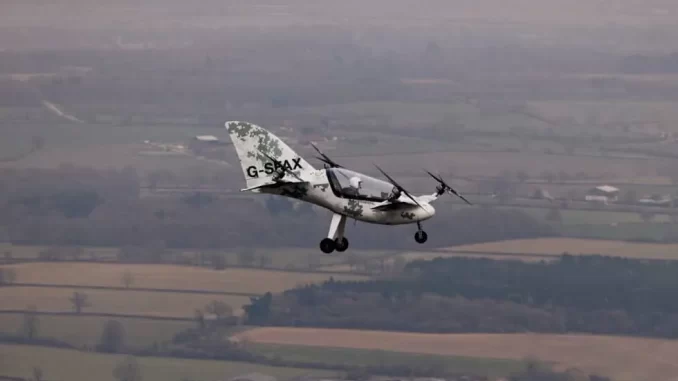
The UK’s Civil Aviation Authority (CAA) has authorised Skyfly’s test pilots, Dr. Bill Brooks and Phil Hall, to begin testing airborne transitions with the Axe VCA (Vertically-Capable Aircraft).
“These critical tests will see the Axe transition from hovering in rotor-borne flight to airplane-style wing-borne flight and vice-versa,” said the company in a press release. “Permission to test these airborne transitions has been granted thanks to the Axe’s smooth progress through its flight test programme, which involved hover testing in late 2024 and wing-borne operations using paved and grass runways in March 2025. So far, the Axe has matched or exceeded all performance and handling expectations,” said Skyfly.
“The ability to complete these transitions without relying on moving parts such as rotating motors or vectored thrust, is a critical design feature of the Axe and a major differentiator to other VCAs and eVTOLs, allowing the Axe VCA to harness the safety and performance benefits of a both fixed-wing and rotary-wing aircraft.
“Flying in a nose-high attitude, lift will be provided by the Axe’s eight motors, powering four large rotors, allowing the Axe to take off and land like a helicopter. To achieve forward flight, the nose is pitched down so that the rotors provide forward propulsion and the wings, rather than the motors, produce lift. This results in higher speed and energy efficiency than a purely rotor-borne aircraft, as well as the ability to glide to safety in the unlikely event of a complete loss of power.”
For more information
Skyfly cleared to conduct airborne transitions between hover and wing-borne flight modes

